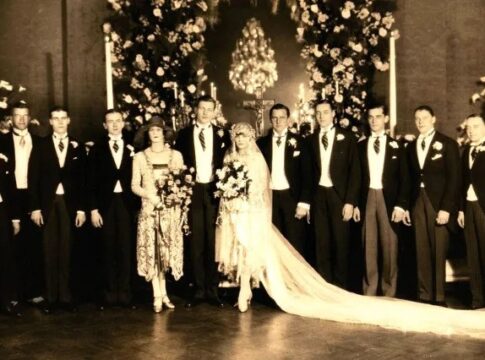The Gilded Age (roughly 1870 to 1900) sounds like a golden era. The name, however, hints at something deeper—like cheap metal covered in a thin coat of gold paint. This period was a time of breathtaking innovation and crushing inequality. It’s when modern America was truly forged.
1. Growth Made the US the World’s Factory
After the Civil War, the US economy went into overdrive, becoming the largest industrial power on the planet. Forget small shops; this was the age of massive factories and national markets, driven by steel, oil, and railroads. Industrial output soared, making goods cheaper and more widely available than ever before. This economic explosion laid the foundation for America’s global dominance in the 20th century.
2. A Handful of Men Ruled Everything
This economic boom led to the rise of individuals who accumulated almost unimaginable wealth, often called “Robber Barons.” Think of names like John D. Rockefeller (oil), Andrew Carnegie (steel), and Cornelius Vanderbilt (railroads). They pioneered trusts and monopolies that controlled entire industries, often crushing smaller competitors. Their immense power led to the first public outcry for government intervention to limit corporate control.
3. Political Corruption Was an Open Secret
While the businessmen were making fortunes, politics was often a messy, corrupt affair. This was the era of political machines, like Tammany Hall in New York, which controlled urban governments through patronage. Jobs, building contracts, and legislative votes were often bought and sold behind the scenes. This widespread corruption eventually fueled a powerful reform movement that demanded accountability.
4. The Invention Boom Transformed Daily Life
The Gilded Age didn’t just build factories; it invented the future. This short span saw the rollout of incredible new technologies. The telephone, the electric light bulb, and vast networks of steel railways weren’t just novelties—they fundamentally reorganized how people lived, worked, and communicated, connecting the country in ways previously impossible.
5. Poverty and Wealth Lived on the Same Block
Perhaps the most defining feature of this era was the stark social divide. While the wealthy built literal palaces, the industrial workers—many of whom were recent immigrants—lived in crowded, unsanitary tenements. The gap between the richest and the poorest became shockingly visible, highlighting the social cost of rapid, unregulated capitalism.
6. Workers Fought Back with Massive Strikes
The terrible conditions and long hours eventually led to enormous conflict. Labor unions fought for better wages, shorter workdays, and safer environments. Major strikes, like the Great Railroad Strike of 1877, involved thousands of workers and often turned violent as companies and the government used force to break them up. These struggles established the groundwork for all modern labor protections.
The Gilded Age, then, was truly a contradiction. It gave us the electric light and the skyscraper, but also the exploited worker and the political boss. Understanding this era means appreciating that every dazzling achievement had an often painful consequence. Its legacy continues to shape debates today about corporate power, wealth inequality, and the government’s role in regulating the economy.
If you’d like, we can explore how the inventions of the Gilded Age completely reshaped the modern city!


